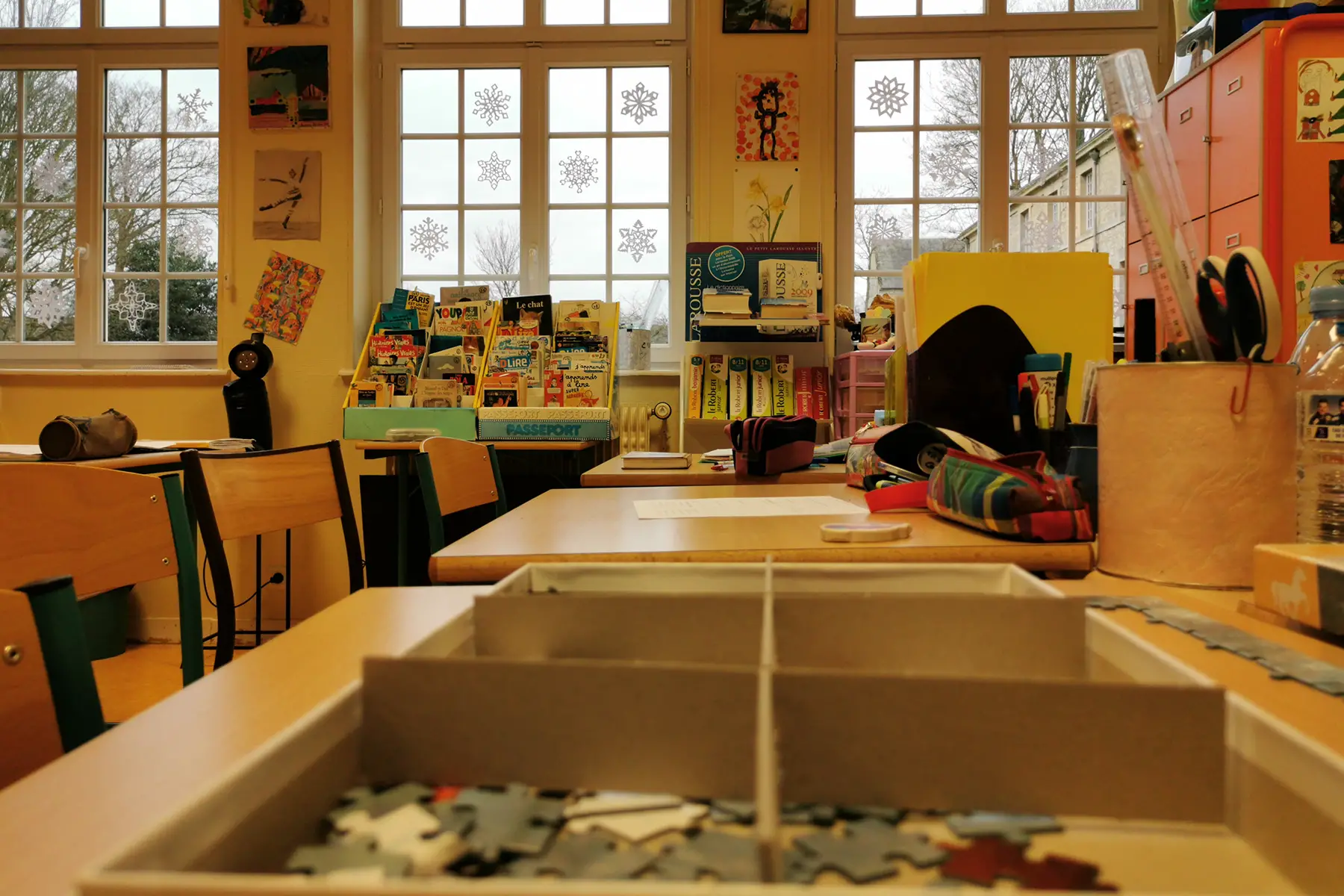If you want to enroll your child in a secondary school in France, then you have plenty of options to consider. Indeed, in France, you have the choice of a state school, private school, international school, or even trade school. This might sound confusing, but some quick research can help you better understand your options.
Alongside our detailed guide to the wider French education system, this article on secondary schools in France lays out everything you need to know. From the different types of schools available to your child’s exam options, it includes the following information:
The secondary education system in France
The vast majority of secondary school pupils in France attend public, state-operated schools. Around 15% of students attend private secondary school. Most of these are Catholic, however, some private schools offer other forms of education. These include international and bilingual schools.
The Ministry of Education is responsible for France’s state schools. By law, all children have to go to school until they are 16. Between the ages of 11 and 15, students in France attend a middle school (collège).
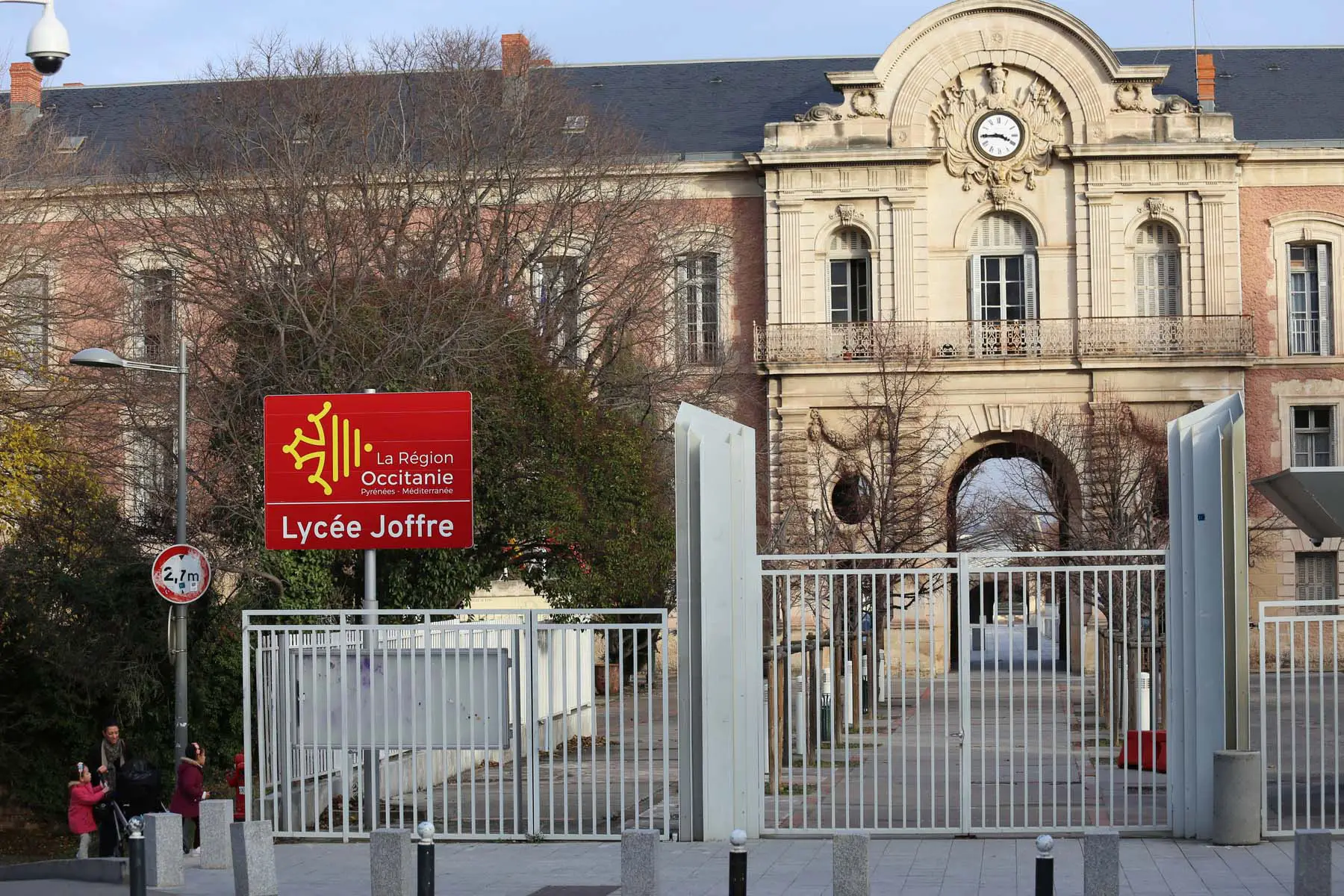
The vast majority of students stay in school beyond this, continuing their education until the age of 18. They spend the last three years of secondary education at a high school (lycée), of which there are three types. More academic-minded students attend a lycée general or a lycée technique, while those at a lycée professionnel follow a more vocational education.
At the end of high school, students sit the baccalauréat exam. However, this is not to be confused with the International Baccalaureate (IB), an international qualification available in certain French schools. There are several types of baccalauréat, including the Baccalauréat français international, which is available in 14 languages in a select number of schools. Students must pass the baccalauréat to enter university. Each subject is graded on a scale of 1 to 20, with 10 being the pass rate.
France has 28 educational regions (academies) that set the local curriculum and examinations to a national standard. The focus in French education is largely on academic work. Subjects like arts, performing arts, and sports mostly take place outside of school. For more information, read our guide to the education system in France.
Two cycles of secondary education in France
Notably, secondary education in France consists of two cycles: middle school (collège) and high school (lycée). Students attend middle school from the age of 11 to 15 and high school from ages 15 to 18.
Middle school (collège) in France
In France, collège is composed of four years of study:
- Sixième (6ème) – ages 11 to 12
- Cinquième (5ème) – ages 12 to 13
- Quatrième (4ème) – ages 13 to 14
- Troisième (3ème) – ages 14 to 15
There is no entrance exam for state schools and they accept all pupils. Students must enroll at their local town hall (mairie) by June before the school year starts in September. After that, a school will be assigned close to a pupil’s home. That said, a parent can request another school (outside their catchment area) that offers a specific curriculum or subject that interests their child.
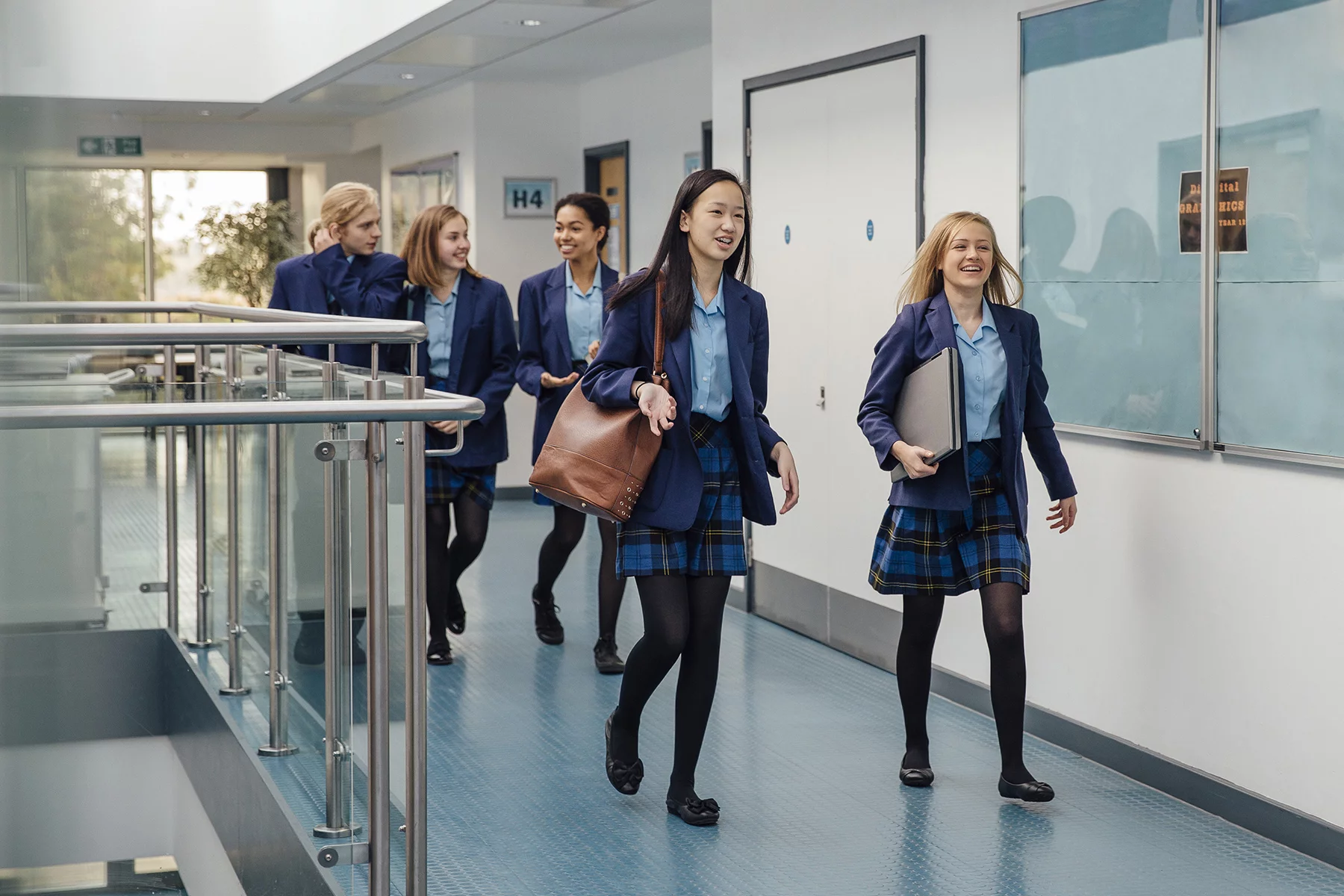
French collèges generally teach the following subjects:
- French
- Mathematics
- Science (chemistry, physics)
- History and geography
- Technical education
- Art and music
- Physical education
- Civic education
- A foreign language
Notably, at this stage, the curriculum does not include the study of biology under the science category.
High school (lycée) in France
In France, secondary education is compulsory until the age of 16. Beyond this, students can either continue to study the last three years of secondary education (until they are 18) or sign up for two years of apprenticeships or civic service. If a student chooses to continue the last three years of secondary education, they will follow one of three study streams in high school (lycée):
- General ( lycée générale) – academic training
- Technical (lycée technologique) – arts/applied sciences/technical training
- Professional (lycée professionnel) – vocational training
Notably, some high schools (lycée polyvalents) incorporate all three training paths.
All lycée or academic streams consist of the following three levels:
- Seconde – ages 15 to 16
- Première – ages 16 to 17
- Terminale – ages 17 to 18
Students following the technologique and professionnel streams can leave after two years with a different diploma such as le certificate d’aptitude profesionalle (CAP) or le brevet d’études professionnelles (BEP) and enter work training without having a baccalauréat.
General (Lycée Générale)
Historically, general high schools have followed the three streams:
- L – French, languages or arts, philosophy
- ES – Economics, mathematics
- S – Mathematics, physics/chemistry, earth, and life sciences
However, a recent reform for 2021 is doing away with these streams. At the end of their first year (seconde), students will still have mandatory classes in core subjects, such as French, history, geography, foreign languages, sport, philosophy, and science. However, they will have to choose three specialties (such as physical education, arts, social, and economic studies) to better adapt their curriculum to their interests. They will then drop one of these elective subjects in their final year. This new baccalauréat reform also places more emphasis on continuous evaluation and less importance on the final examination.
At the end of high school, students can sit one of several different baccalauréat exams, which grants them entry to a public French university.
Technical (Lycée Technologique)
Students following this stream are essentially preparing for further higher education in specific non-academic, technical fields, such as hospitality management or costume design. There are eight types of baccalauréat technologique, or exam streams, which cover 17 specialist technical fields. These include, but are not limited to, the following:
- Science and Industrial Technologies and Sustainable Development (STI2D)
- Health and Social Sciences (ST2S)
- Management Sciences (STMG)
- Applied Arts and Design (STD2A)
- Music and Dance (TMD)
- Agronomy (STAV)
- Hotel Management (STHR)
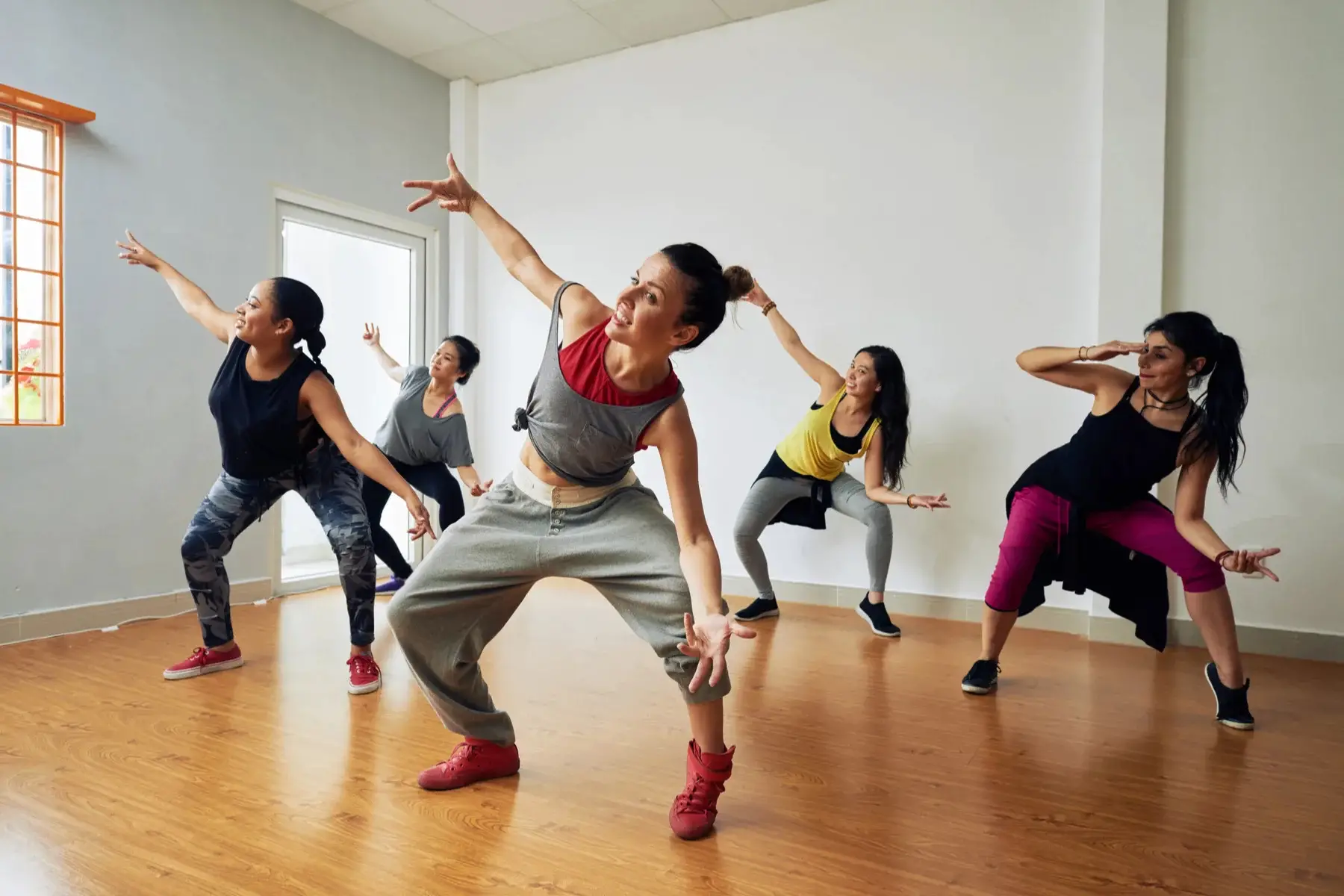
After their first year in the technologique, students can choose between a specialized field or a general course. Moreover, after graduation they can apply for a university bachelor’s course (license) or a more technical two-year diploma: the Brevet de technicien supérieur (BTS) or Diplôme universitaire technologique (DUT).
You can find a full list of subjects in the lyceé general and technologique tracks and a breakdown of evaluation methods here.
Professional/Vocational (Lycée Professionnel)
This study steam prepares students for vocations (such as plumbers or beauticians) after collège by integrating apprenticeships and professional training into their high school curriculum. Therefore, it is the best way to enter the workforce right after high school.
Moreover, there are over 100 different specialties to choose from and students work towards one of a number of possible diplomas. This might include the Certificat d’aptitude professionnelle (CAP) or Brevet d’études professionnelles (BEP). After finishing three years of this type of lycée with a Baccalauréat professionnel (bac pro) diploma, they can still apply for university. However, most students go on to study a BTS (Brevet de technicien supérieur) or DUT (Diplôme universitaire technologique), which is equivalent to two years of bachelor’s studies, before joining the workforce.
State/public secondary schools in France
French public secondary schools (also known as state schools) are free, secular, and co-ed. Over 80% of French students attend a state school, and around 75% of students complete their secondary education at one of these schools by taking the baccalauréat exams.
According to OECD data, reading skills in French 15-year-olds are slightly higher than average. However, academic performance varies greatly depending on the socio-economic status of the child and school, with children of immigrant communities often underperforming compared to native French children. Moreover, there is often not enough linguistic support available for non-francophone children.

Nonetheless, teaching standards in France are generally high and schools follow a nationally-set curriculum. However, it is worth knowing that the French educational approach is more focused on discipline and rote learning rather than creativity and self-expression. Therefore, if you’re in search of a different style of teaching or educational program for your child, you may wish to search out other options.
Curriculum and examinations in state secondary schools in France
In secondary school, students have a minimum of 26 hours of classes per week. Specifically, 15 hours are split between four major subject areas: French, mathematics, history/geography, and a foreign language, which is often English. The remaining hours are split between a second foreign language, sciences, technology, sport, and the arts. While there are around three to four hours dedicated to physical activities, artistic subjects are only taught for one hour. However, additional subjects and languages may be available at certain schools.
It is also worth noting that some schools close on Wednesday afternoons and older pupils may have lessons on a Saturday. When it comes to class size, you can expect there to be 30 or more students per class.
At age 15, students sit the brevet, the Diplôme National du Brevet (or Brevet des Collèges). This test assesses them on French, mathematics, and history/geography. After that, students may leave the schooling system once they turn 16. Alternatively, most continue to a lycée. This is where they start preparing for the baccalauréat (le bac) which is taken at 18. This is the qualification needed to enter university. In order to prepare themselves for these exams, students start to specialize while at lycée.
The grading system in French schools
Typically, teachers encourage individual competition through an absolute grading system, instead of grading on the curve. Therefore, most tests and exercises are marked out of 20. Hence, the rough equivalent for an A to F grading system would be as follows:
- Echec (fail): 0 – 9, F
- Suffisant (sufficient): 10, E
- Satisfaisant (satisfactory): 11, D
- Assez bien (quite good): 12 – 13, C
- Bien (good): 14 – 15, B
- Très bien (very good): 16 – 17, A
- Excellent (outstanding): 18 – 20, A+
As such, this grading system aims to push students to strive for academic achievement and not get complacent.
The pros and cons of state schools in France
Some advantages of sending your child to a state school include:
- State schools are free
- Your child can study locally
- The teaching standards are generally good
- They will have the same curriculum as in a French private school
- It will allow them (and you) to integrate into the local community
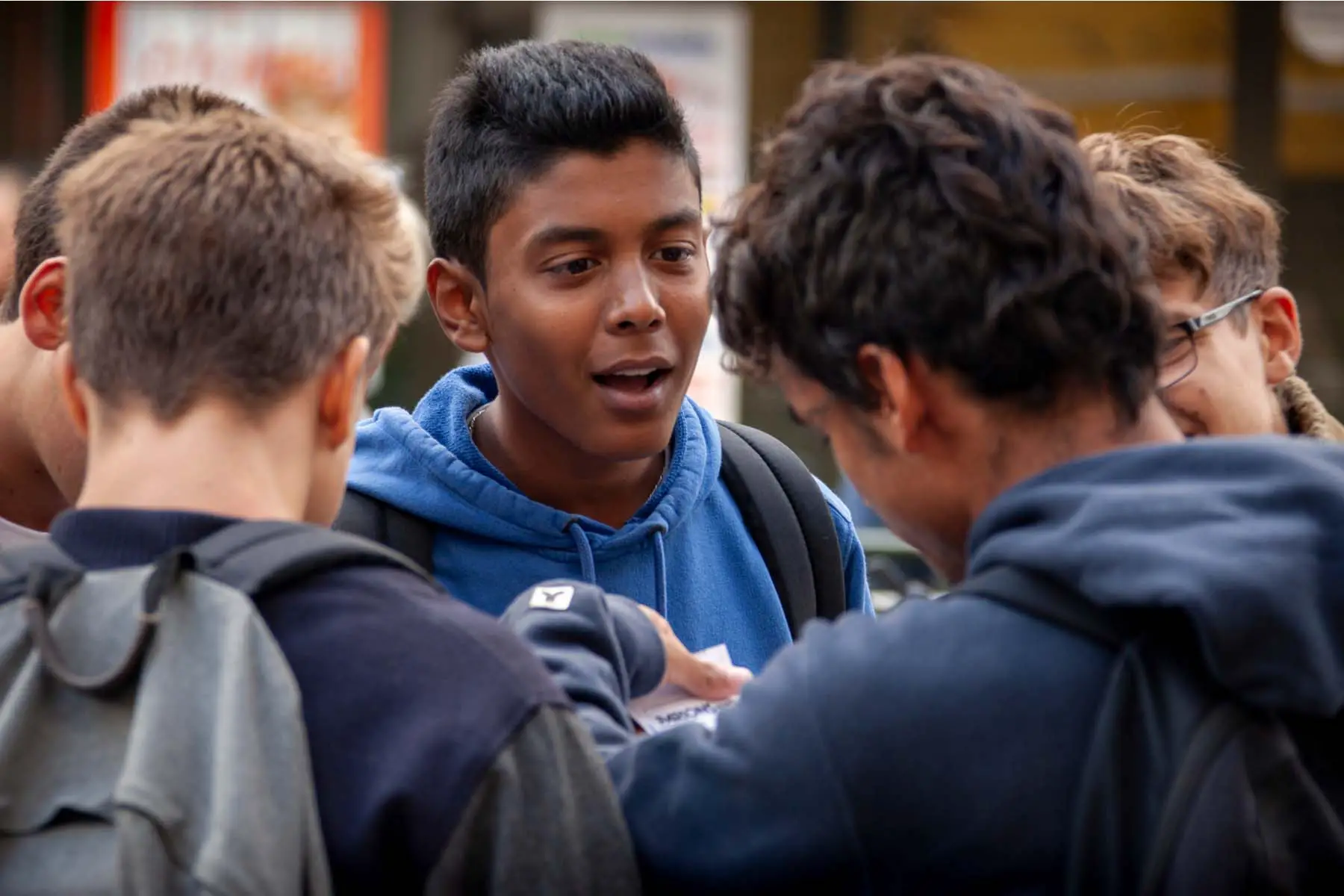
Some potential disadvantages of sending your child to a state school include:
- The quality of the school can vary and largely depends on the socio-economic level of the neighborhood and local families
- Older children may find it hard to integrate into a new education system in a foreign language; so many expat students end up repeating a year
- Language support is often not available if your child doesn’t speak French
- There are no boarding facilities for children of parents with demanding work schedules
Applying to secondary state schools in France
You need to register your child by the end of the spring term for the start of the school year in September. However, if your child is arriving from outside of France, you will need to contact the educational district’s administrative head, the rectorat. A few weeks or months after that, a school will be attributed to you based on where you live and whether your child has any special requirements.
You can also write directly to the principal of a collège or lycée to justify your preference for their school. This official letter is called a demande de dérogation scolaire. Your request must be motivated by a particular need, which can be medical (like a disability), geographic (like the proximity of the school to your work or a grandparent), or academic (for example, your child’s desire to study a specific subject).
To register your child, you will need to get a certificat d’inscription by supplying the following documents to your rectorat or uploading them to an online registration portal:
- proof of birth – a birth certificate, extrait de l’acte de naissance, or a livret de famille (an official French booklet of family records issued by the mairie)
- both your and your child’s ID or passport copy
- a passport-style headshot of your child
- proof of residence – usually a copy of a utility bill or rental agreement showing your home address
Your child will typically secure a secondary school place in late June or early July. However, if your child did not receive a place at your preferred school, you can always appeal the decision. Just bear in mind that places in the best schools are limited.
Private secondary schools in France
About 22% of French children attend private schools (écoles privées or écoles libres) throughout France. There are two types of private schools in France: contracted to the French government (sous contrat) or non-contracted (hors contrat). The latter are in the minority, tend to be more expensive, and don’t have to follow the national curriculum. Nevertheless, they have been growing in popularity in recent years.
In 2020, there were over 1,500 hors contrat schools, 30% of which are confessional, mostly Catholic. The remaining 70% are non-confessional, and some bilingual and international schools fall into this category.
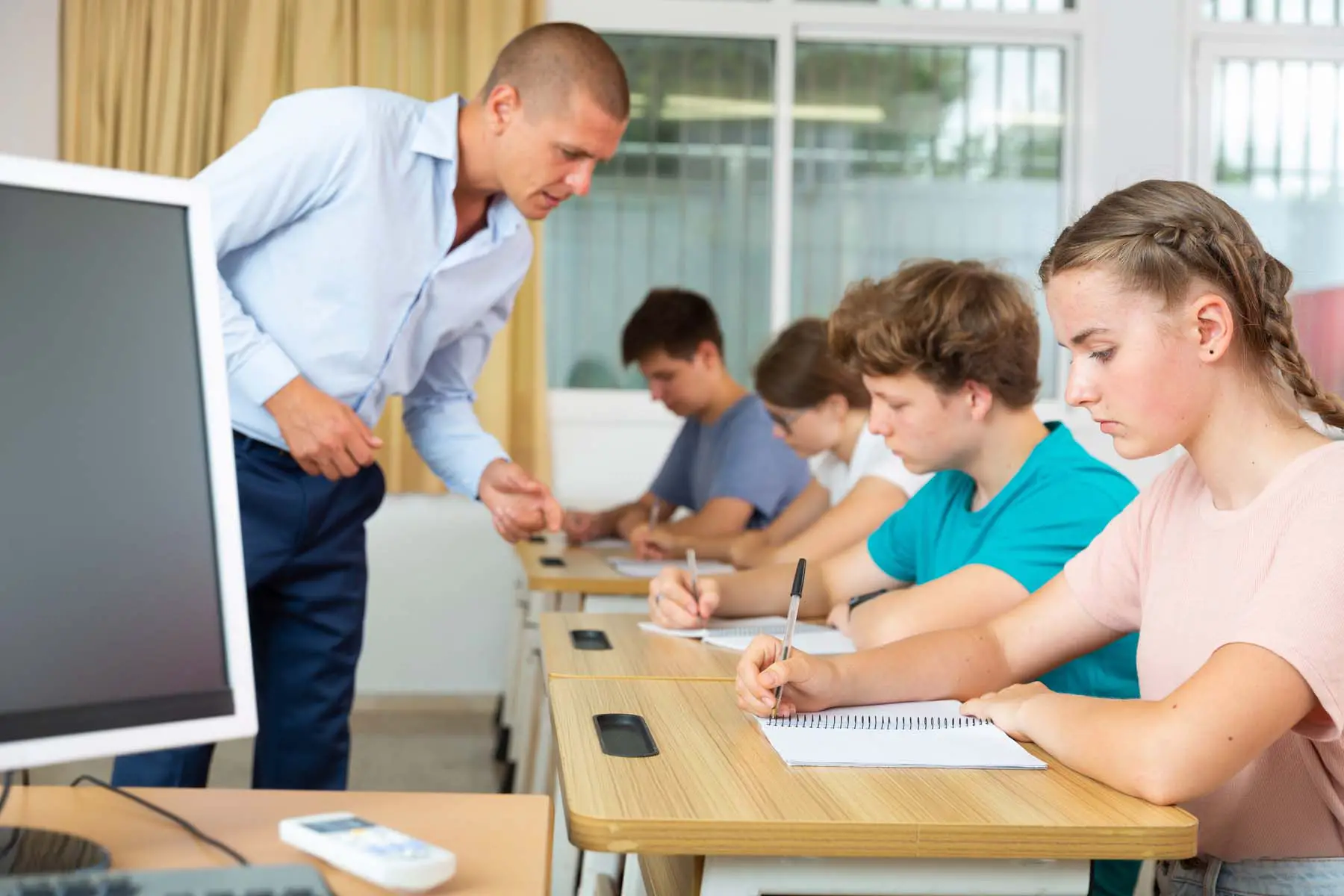
Private schools tend to offer more individual attention to students and have smaller class sizes. As such, many state-contracted private schools will provide additional support for non-French-speaking students.
Tuition fees for private schools are highly variable and can range from €2,000 to €20,000 per year. There may also be other charges on top, such as registration fees, lunches, and excursions. Enrollment is often on a first-come, first-served basis. To apply, you should contact the school for enrollment requirements and procedures.
If your child requires boarding facilities, private schools are probably your only option. There are currently around 300 secondary schools in France that offer full boarding (internet).
International schools in France
There are different types of international schools and educational programs to choose from in France. This includes schools with English as the language of instruction, those that offer a fully bilingual program in various languages, and French schools with a section internationale. The latter offers a few hours of lessons per week in any one of 17 foreign languages.
Some international schools also follow British or American curriculums and offer English or American educational qualifications such as GCSEs and the American High School Diploma. Typically, students at international schools may also sit the International Baccalaureate (IB) or take a combination of classes and exams from these different programs.
Admission and enrollment procedures vary, but it’s best to apply as far in advance as possible. Often, students must reach a specific standard of education and schools will ask for past school reports and exam results.
The Council of International Schools has a list of CIS members and accredited international schools in France. You can also contact ELSA, the Paris-based English Language School Association for international and bilingual schools in France.
The pros and cons of international schools in France
Some advantages of enrolling your child in an international school include:
- They offer more extracurricular activities and better facilities
- They provide a global community of bilingual teachers and students
- Place a strong emphasis on multiculturalism and languages
- Have smaller class sizes and a high teacher-student ratio
- Parents can typically communicate in their own language
- Students may find it easier to continue within an education system they are familiar with, that is taught in a language they understand
- They provide an internationally recognized program that may be beneficial for university applications
- Their educational philosophies may be more focused on creativity and self-development rather than academic and rote learning
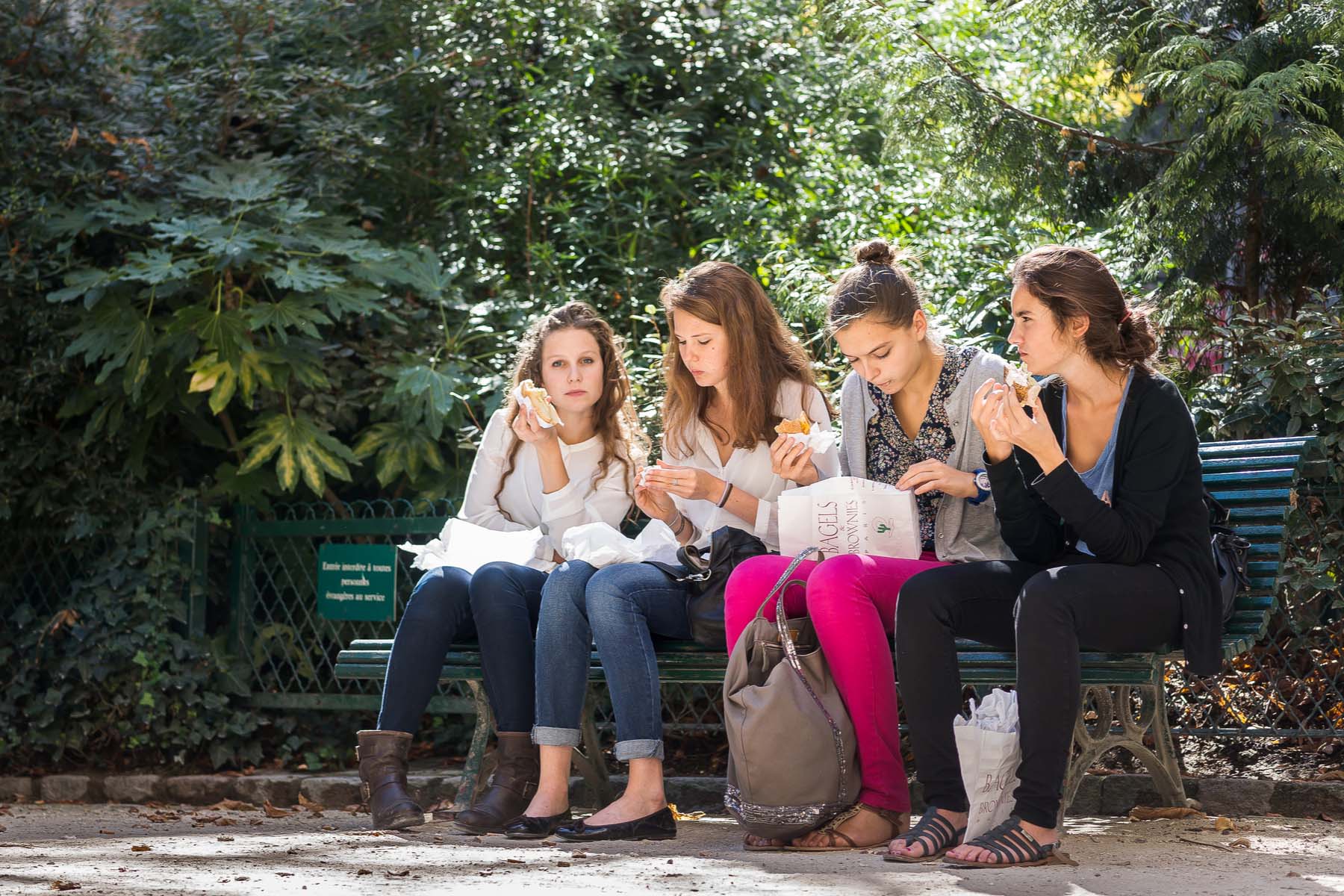
Some disadvantages of enrolling your child in an international school:
- International school fees are expensive, although scholarships, bursaries, and payment plans are often available; some employers also subsidize education fees
- Children may integrate less into the local culture and language
- The student population at international schools can be transient as families often move on, which can be hard on friendships
- Admissions may assess a child’s academic abilities through an entrance test; therefore, this may place additional pressure on your child
- The majority of schools are located in Paris and bigger cities, so you might not find one in your area
High school exams in France
At the end of high school (lycée), at around the age of 18, students sit the general, technical, or professional baccalauréat exams. A reform due to come into effect in 2021 has restructured these end-of-school exams. Now, three written and one oral exam will make up 60% of the student’s final grade. The remaining 40% is the result of continuous assessment. The reform aims to give students more choice in the subjects they take and encourage consistency and engagement throughout the school year.
Around 85% of students currently leave high school with a bacclauréat diploma grade that allows them to access a French university. Almost half (44% of students) go on to complete a university degree. French universities are open to all, and the only requirement is that a student possesses a ‘bac‘ or equivalent foreign high school diploma.
Accessing the more elite ‘grandes écoles‘ in France, on the other hand, often involves additional preparatory classes that can stretch to two to three years after high school. These highly academic and demanding classes prepare students to sit selective entrance exams to France’s most elite high education institutions.
The International Baccalaureate (IB) in France
The International Baccalaureate (IB) is an internationally recognized educational curriculum. IB programs are taught in over 5,400 schools across 159 countries. There are 23 schools in France that are accredited to offer the IB programs. These vary between bilingual or solely English-language education. From the age of 16, students can choose a Diploma Program or a Career-related Program. Universities around the world recognize the IB as a university admission level qualification.
The IB Diploma requires students to study six subjects over two years, and there are different courses within each subject group. Subjects include literature, foreign languages, sciences, mathematics, humanities, and the arts. Students must also take an additional course in philosophy, contribute to creative activity or service, and write an extended 4,000-word essay. You can find out more about the IB diploma in our guide.
Trade schools in France
Instead of continuing their education in a general lycée, at the age of 16, students in France can enroll in a lycée professionnel. These are public trade schools that are operated by the Ministry of Education. There are almost 1,000 lycées des métiers that offer such vocational training. Students can also take more vocational-style courses at a lycée technique.
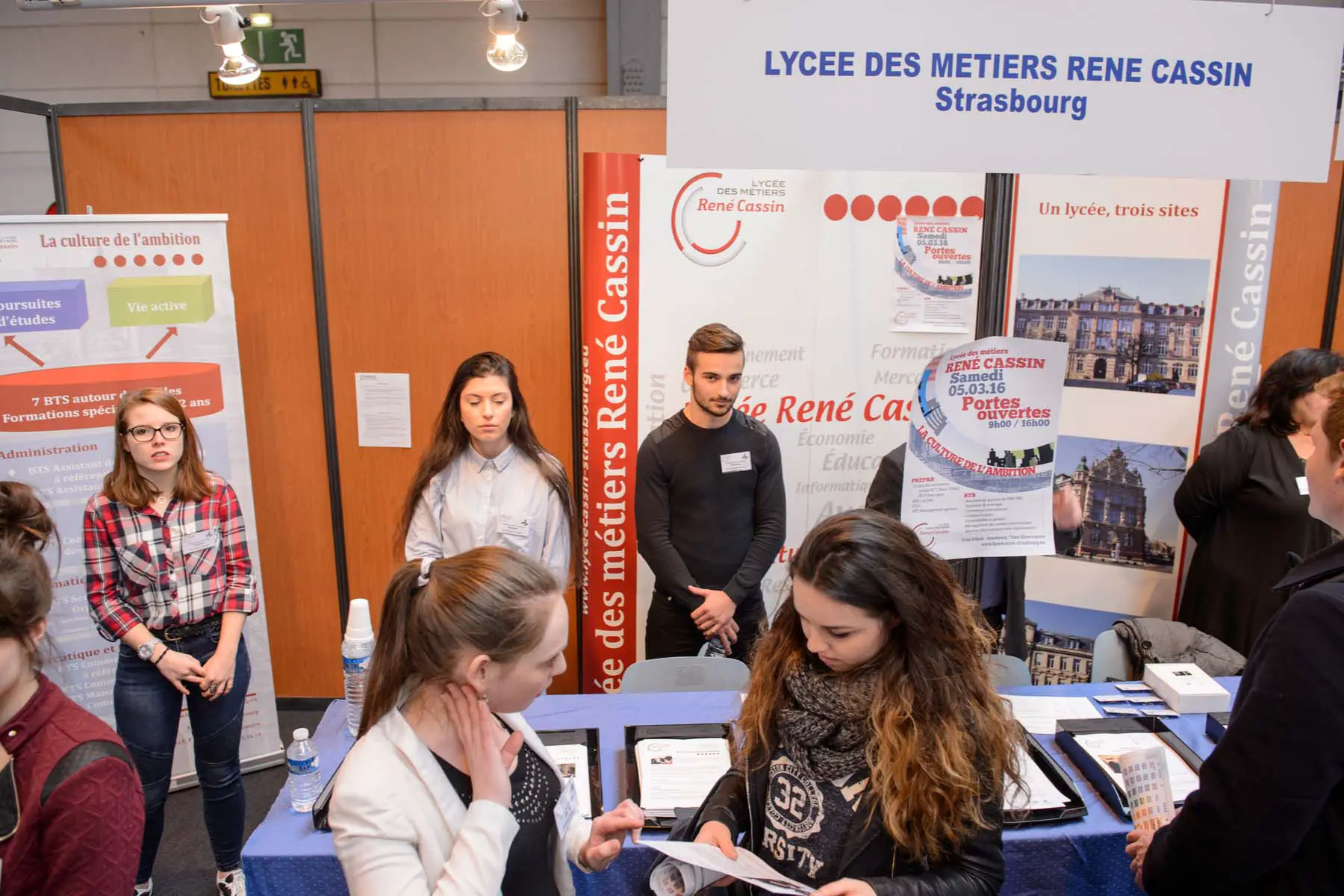
The lycées des métiers prepare students for various diplomas, inluding the bac professionnel (BAC PRO), certificat d’aptitude professionnelle (CAP), brevet professionnel (BP), brevet des métiers d’arts (BMA), and brevet de technicien supérieur (BTS). These usually last two or three years and can be stepping stones to a university course or a direct path into the workplace.
There are professional lycées focusing on specific sectors of the economy. For instance, the lycée des métiers de l’hôtellerie et du tourisme trains students interested in tourism and hotel management. Similarly, for careers in the agricultural sector, students may attend a lycée d’enseignement général, technologique et professionnel agricole (LEGTPA) or a centre de formation d’apprentis (CFA) offering courses with vocational training.
The registration process is much the same as with a general lycée. At the end of the collège, a student will generally be directed towards a lycée technique or lycée professionnel. This will follow discussions with a careers guidance counselor. Places are attributed based on location.
Useful resources
- France Education International – the French Ministry of Education website
- Service-Public – the Interior Ministry website for administrative procedures
- International Baccalaureat – the official IB website
- Council of International Schools (CoIS) – the membership community of international education
- OECD – provides global statistics and comparisons of school systems
- Enseignement Privé – a French website about private education
- ELSA – the website of the English Language Schools Association


